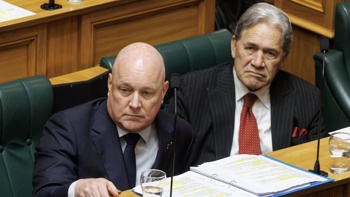
The number of people unemployed in New Zealand has been dropping by more than 1000 a week in recent months, with an extremely tight labour market pushing employers to up pay to keep staff.
Statistics New Zealand revealed today that in the three months to June 30, the unemployment rate fell to 4 per cent, from 4.6 per cent at the end of March.
Ahead of the release, most economists predicted the unemployment rate would fall, but the drop was much sharper than expected.
The total number of people unemployed fell by 17,000 over the three month period, to 117,000, a drop of 12.4 per cent, the largest percentage drop since the Department of Statistics began the household labour force survey in 1986.
Unemployment is now below where it was in the middle of 2019.
"The fall in unemployment is largely in line with other labour market indicators, including declining numbers of benefit recipients and increased job vacancies and recent media reports of labour shortages and skills mismatches," Statistics New Zealand senior manager Sean Broughton said in a statement.
The number of people classed as underutilised - the number unemployed, those working less than they would like and others that could work but are not - plunged 13.3 per cent or 48,000 people to 315,000. It was the largest quarterly fall since the underutilisation measure was established in 2004.
"The large decrease in underutilisation shows that spare capacity in the labour market is dwindling, which can potentially result in tighter labour market conditions and lead to upwards pressure on wage rates," Broughton said.
The large drop is likely to increase bets that the Reserve Bank will respond by raising the official cash rate later this month, with a very tight job market and rising wage pressures suggesting the economy may be overheating.
Pressure for workers also saw a marked pick up in the labour cost index, which rose to 2.1 per cent from 1.6 per cent in March, Statistics New Zealand said.
"A lot of firms reported trying to match market rates and retain staff in a tight labour market," Statistics New Zealand business prices deliver manager Bryan Downes said. The survey asks companies why they are increasing pay rates.
Statistics New Zealand said more than half of the roles surveyed for the labour cost index saw an increase in wages in the past year, however, for the first time since 2018 annual wage inflation (2.1 per cent) did not outpace annual household living-costs inflation (2.5 per cent).
Construction wages were the biggest riser in the index, up 3 per cent, although Statistics New Zealand said the biggest reason for the increase in the index was caused by retail and accommodation wages which were impacted by the increase in the minimum wage to $20 per hour on April 1.
Statistics New Zealand said in seasonally adjusted terms, the economy added 46,000 jobs in the year to June 30, the majority (28,000) doing to females. Roughly half of the increased number of jobs were part-time.
Women are still more likely to be unemployed (4.3 per cent) than men (3.8 per cent).
Take your Radio, Podcasts and Music with you









